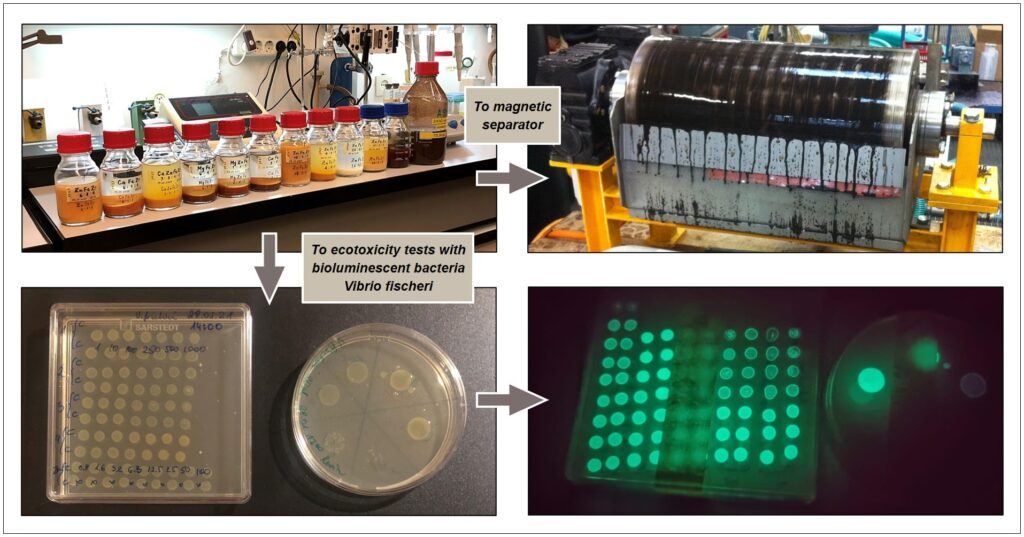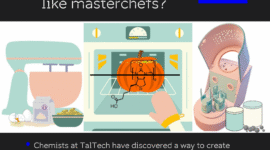Phosphorus (P) is one of the fundamental building blocks of life, also known as the ‘bottleneck of life’, being an irreplaceable chemical element, essential for the growth of all living beings. This makes P a key nutrient with critical importance for the production of fertilizers in agriculture and global food security. The problem is that the remaining finite P reserves are depleting fast and contain increasing toxic impurities. Researcher Asya Drenkova-Tuhtan, from the Laboratory of Environmental Toxicology at the National Institute of Chemical Physics and Biophysics (NICPB / KBFI), has found an affordable solution that falls into the paradigm of circular economy.
Currently, phosphorus is mined from phosphate rock in regions like China, North Africa and Western Sahara. A critical issue for the security of phosphate rock supply is the geopolitical tension caused by the fact that more than 90% of the high-grade rock reserves are in a handful of countries, where Morocco alone controls about three-quarters of the remaining reserves, most of which are in Western Saharan mines. In fact, Estonia also has some phosphate mines, but Europe in general is heavily dependent on imports.
It is disputable when exactly the expected peak in phosphorus production and the phosphate rock depletion will occur. Some studies argue that we have reserves for the next 300-500 years, others say only for the next 100 years. It is, however, indisputable that phosphorus is a critical element for humanity and that the costs for extraction, processing, storage and transportation of this commodity will keep rising steadily in the future. Consequently, in 2014, the European Commission already declared phosphate rock as one of the 20 critical resources for the European Union. This urged the necessity for more sustainable practices in phosphorus management, such as developing alternatives for phosphorus recovery from secondary P-rich sources, such as human excreta/municipal wastewater, manure, food waste, and other organic sources for reuse as renewable fertilizers.
Phosphorus in secondary resources
In the past 20 years, there has been intensive research going on to find out how to recover phosphorus sustainably and economically from secondary resources. A decade ago, the wealthier European Union countries like Germany, Netherlands, Belgium, etc., were pressured to start developing cost-effective technologies which enable phosphorous recycling from P-rich streams. Logically, one of those streams is the municipal wastewater from our sewage system, containing human excreta, rich in phosphorus, energy-storing organic matter, and other valuable nutrients. Thus, Drenkova-Tuhtan and her German collaborators asked themselves whether they could come up with a material that can selectively harvest phosphorus from the wastewater – a medium with inhomogeneous composition of diverse organic and inorganic matter, including various undesired pollutants. For that they had to find suitable adsorbent materials and engineer them accordingly to make them highly selective only for phosphorus.

The current paradigm of sustainability and recovery of finite resources set the goal to provide a novel technology which can simultaneously remove and recover phosphorus from wastewater. Besides being a valuable nutrient, phosphorus must also be removed from the treated sewage prior to discharge in the river due to the risk of causing algae bloom, leading to oxygen depletion and the so-called eutrophication of the receiving water bodies. In the context of circular economy, the goal was to make all materials involved in the technology reusable. “It took years until we finally found the ‘magical’ combination,” says Drenkova-Tuhtan. The solution developed in cooperation with researchers from the University of Stuttgart and the Fraunhofer ISC institute in Germany, proposed the use of nanocomposite magnetic carrier particles on magnetite Fe3O4 basis (5-25 µm) coated with a tailored adsorbent material for the selective and reversible sorption of phosphorus from wastewater. This allowed not only the removal, but also the recovery of phosphorus from the aqueous medium.
“Basically, the engineered composite particles act like “switchable” micro magnets which get magnetized in the presence of a magnetic field and can be separated magnetically from water – a quick and efficient way for their harvesting, especially considering their small size necessary to provide high surface area for the phosphate adsorption. Once the magnetic field is turned off, the particles lose their magnetization and can be homogeneously re-dispersed in water, chemically regenerated and reused again. The magnetite carriers provide only the magnetic properties for efficient separation, but the actual phosphate sorption is performed by the non-magnetic adsorbent coating deposited on the magnetic particles which had to be optimized over the years,” describes Drenkova-Tuhtan.
For the actual implementation of the technology, large-scale magnetic separators are needed to be able to treat full stream thousands of cubic meters of wastewater with the magnetic particles. In fact, these commercial magnetic separators already exist and have been used for decades in the mining industry. “The magnetic separation approach of fine magnetic particles has already been implemented full scale and is a routine practice in the mining industry. We just adopted one type of their robust inexpensive magnetic separators and used it in a pilot-scale test as a proof-of-concept for wastewater treatment,” explains Drenkova-Tuhtan. Moreover, the technology developed for municipal wastewater can be used also for other phosphorus rich wastewaters, e.g., from the food processing, paper or textile industries. Another valuable application of the novel magnetic adsorbent particles is their ability to remove other problematic P-containing organic compounds such as the recalcitrant, non-biodegradable phosphonates. Phosphonates are industrial chemicals widely used as antiscalants in drinking water membrane filtration and reverse osmosis desalinations plants, but also as additives in household detergents and cleaning agents. A recent publication by Drenkova-Tuhtan et al. demonstrates the successful sorption of phosphonates with the developed magnetic particles.

The proposed technology allows not only the removal, but also the recovery of phosphorus, thus being a superior alternative to the conventional P removal methods in wastewater treatment. And since wastewater treatment is a communal utility service funded through taxes paid by the citizens, it can tolerate only cheap and robust, but innovative solutions to improve the service.
“This was one of our major goals in developing this technology – to provide an efficient but at the same time affordable solution for phosphorus recovery, nothing too exotic or expensive. Moreover, potential commercialization for full-scale application requires fulfilling some important criteria: the engineered material must be cheap, selective, stable, harvestable, reusable, easy to manufacture using abundant non-hazardous precursors and guarantee simple application with minimal chemical use. Following these criteria, the synthesis of the proposed micro-sorbent particles is based on a well-established, rapid, inexpensive and upscalable process, targeting sustainable recovery of all involved resources. The only thing left is to verify the non-toxic nature and environmentally friendly application of the materials, following the ‘safe-by-design’ principle, through a series of ecotoxicity tests,” says Drenkova-Tuhtan.
Ecotoxicity of the materials
To be able to learn how to test the ecotoxicity of the materials, Drenkova-Tuhtan applied for a Marie Skłodowska-Curie fellowship within the EU Horizon 2020 research and innovation programme and successfully received funding through the “NanoPhosTox” project (Grant Nr. 867457), which brought her to Estonia. Her supervisor is Anne Kahru, fellow of the Estonian Academy of Sciences and head of the Laboratory of Environmental Toxicology at the National Institute of Chemical Physics and Biophysics (NICPB / KBFI) in Tallinn. “Asya is here as a Marie Curie fellow and my task as her supervisor is to teach her new skills she is lacking so far, which in her case is the know-how in ecotoxicology and ecotoxicity testing. We are providing the required competence and facilities to conduct the necessary tests and interpret their results,” explains Kahru.

Drenkova-Tuhtan is conducting the bioassays using 3 different aquatic organisms. “One of them is the naturally bioluminescent bacteria called Vibrio fischeri. If there is any toxicity, the light production by the bacteria will be inhibited depending on the concentration of the engineered adsorbent particles,” describes Kahru. “The other organism is a small crustacean, the few-millimetre sized Daphnia magna. These tiny animals live in our healthy rivers and lakes. And the third test organism will be the microscopic green algae. These three tests make up the simplified food-chain model of the fresh-water ecosystem and thus predict the potential environmental hazard of the newly synthesized particles,” adds Kahru.
“My job now is to look at the most promising adsorbent samples among almost a hundred variations that I have tested over the years. I took the 10 best-performing engineered phosphate absorbents from my previous research, optimized their synthesis and in the next couple of years, I will test the potential ecotoxicity of all 10 materials on the 3 different test organisms,” says Drenkova-Tuhtan. After successful completion of all tests and verification that the materials are not toxic to the environment, Drenkova‑Tuhtan will start the process of commercializing the technology.
Further information:
Asya Drenkova Tuhtan
asya.drenkova@kbfi.ee
 Back
Back



